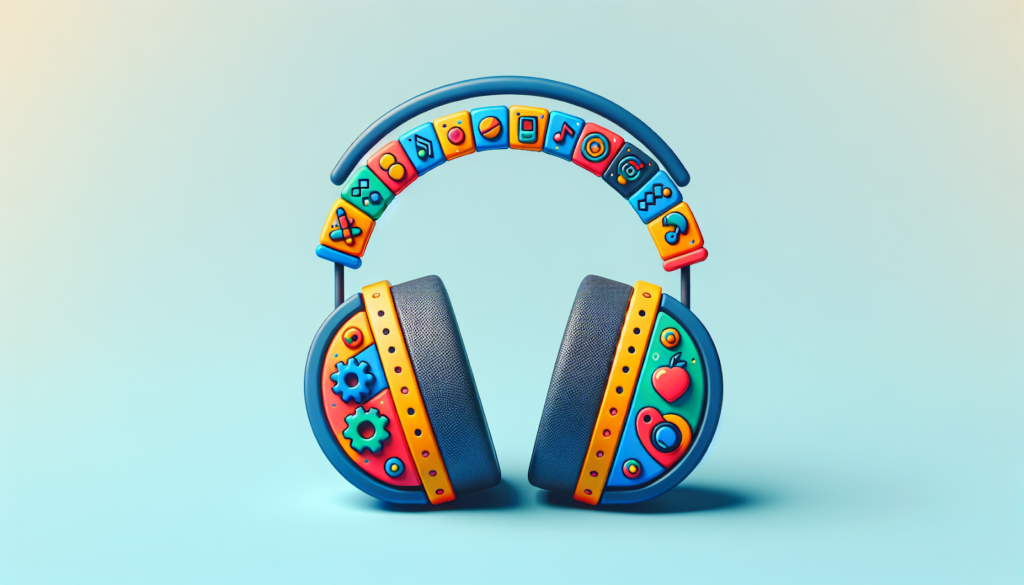As technology becomes further integrated into classrooms, headphones are becoming an essential item on the school supplies list. For children in school, headphones can be a tool for interactive learning, language development, and individual study. However, with a myriad of options available, finding the right pair is crucial. It’s not just about audio quality—safety, comfort, and durability are paramount. The importance of choosing the right headphones cannot be overstated. They should limit the potential for hearing damage, fit snugly without causing discomfort, and withstand the rigors of daily use by children.
When selecting the best headphones for kids, parents and educators should factor in various considerations. Criteria include safe volume levels, ergonomic design suited for smaller heads, and materials sturdy enough for rough handling. Moreover, one must decide between wireless and wired options, consider noise-cancellation capabilities, and ensure compatibility with educational devices. A good pair of headphones for a child should also come with reliable customer service and a solid warranty as a safeguard against defects and accidental damage.
Understanding Hearing Safety for Children
Protecting a child’s hearing is paramount when selecting headphones for school use. Safe sound levels for kids are typically set at a maximum of 85 decibels, as exposure to higher volumes over time can lead to irreversible hearing loss or damage. Ensuring that the headphones adhere to these standards is critical, and many are specifically designed with built-in volume-limiting capabilities.
Headphones that protect against hearing damage often include features like automatic volume reduction and limiting technology. Additional protective measures may include parental control settings that lock the maximum volume. It’s essential to educate children about the importance of keeping the volume down, even when such features are in place.
With a focus on safety, many manufacturers tailor their headphone designs to cater specifically to children’s needs. Looking for headsets that come with recommendations from hearing health professionals can also guide parents in making a safer choice for their children’s auditory welfare.
Comfort and Fit for Young Ears
Young ears are delicate, and thus, comfort and the ergonomic design of kids’ headphones cannot be overlooked. Headphones designed for children should have padded ear cups and adjustable headbands that can grow with the child, minimizing the need for frequent replacements. This customization ensures that the headphones fit securely without being too tight, which is important for maintaining comfort over extended periods of use.
Tips for ensuring a proper fit include looking for lightweight designs that reduce pressure on the head and ears. Ear cups should encompass the ears without pinching, and an adjustable headband can help achieve a snug fit. Avoiding oversized headphones is necessary, as they can slip and slide, causing distractions and potentially leading to hearing damage if children turn up the volume to compensate.
Moreover, seeking out materials that are hypoallergenic and free from harmful substances is also a consideration for children with sensitive skin. Breathable fabrics and cushioning that can be easily cleaned can help promote hygiene, especially if headphones are shared among students or used across different activities at school.
Durability and Build Quality
When it comes to kids’ headphones, durability is as important as any other feature. Children aren’t always gentle with their belongings, so the materials and design must be able to withstand rough handling. Look for headphones made of robust plastics or metals that can absorb impact without breaking. Flexibility is also a key factor, as rigid headphones are more likely to snap under pressure.
The importance of warranty and customer service becomes apparent when accidents happen. A good warranty can alleviate concerns over possible malfunctions or damage, offering repairs or replacements when necessary. Reliable customer service ensures that any issues can be addressed promptly, minimizing disruptions to a child’s learning experience.
In addition to the warranty, other indicators of build quality to look out for include reinforced cables that resist tangling and fraying, and sturdy hinges that can handle continuous folding and unfolding. These considerations will not only ensure longevity but also contribute to the overall safety of the headphones.
Wireless versus Wired Headphones
In the debate between wireless and wired headphones for school use, both options come with their own sets of advantages and disadvantages. Wireless headphones offer freedom from tangled cords and the ease of movement, which can be beneficial for active learning environments. They are also generally more adaptable to different devices, as long as Bluetooth is available.
However, wireless connectivity brings its own challenges, including battery life considerations, potential connectivity issues, and the risk of kids losing them. Additionally, in a classroom setting, managing multiple wireless devices could lead to distractions or interruptions in the learning process if not properly managed.
As for wired headphones, their reliability stands out. There are no batteries to charge, making them ready to use at any time, and the direct connection often means fewer issues with sound quality or interference. However, cords can pose a safety hazard if not managed correctly and may lead to damaged jacks or ports with rough handling. The practicality of each type depends on the specific needs and circumstances of the school and the child.
Volume Limiting Technology
Volume limiting technology is integral in headphones designed for children, as it can prevent accidental damage from exposure to excessively loud sounds. How volume limiting works is straightforward: the headphones are engineered to not exceed a certain decibel level, typically the recommended safe limit of 85 decibels for children.
The market offers several recommended models with volume control features. These headphones often employ resistors or circuitry that cap off the maximum volume output, ensuring it does not surpass safe listening levels. Some also come with software that parents can use to set and lock desired volume settings, adding an extra layer of control for the user.
It is essential to verify that these features are accurately calibrated and compliant with health standards. Many reputable brands are transparent about their safety features and often advertise their compliance with international health guidelines, making it easier for parents and educators to pick a secure and reliable product.
Noise Cancellation and Isolation
Noise cancellation and isolation in headphones serve a dual purpose: minimizing background noise to improve concentration, and allowing lower listening volumes, which protects hearing. Passive noise cancellation involves the physical design of the headphones to block out ambient sound. In contrast, active noise cancellation uses technology to create sound waves that counteract outside noise.
In a school environment, however, it is important to balance isolation with the need to maintain awareness of one’s surroundings. Headphones with noise-cancellation features should not isolate children completely, as they may need to hear important announcements or instructions from a teacher. Parents and educators should consider headphones that offer adjustable levels of noise isolation, to keep children engaged yet still responsive to their environment.
It’s also vital to educate children on the proper use of such features. Teaching them when it’s appropriate to use noise cancellation—and when they need to be aware of their surroundings—will encourage responsible headphone use.
Additional Features And Accessories
An array of features and accessories can make headphones more suited to the educational needs of children. Microphones are advantageous for interactive learning experiences, especially with the rise of language apps and video conferencing in classrooms. They allow students to participate in discussions and communication-focused activities without external noise interference.
In-line controls can provide convenience, allowing children to adjust volume or pause and play audio without reaching for their device. This minimizes disruption and maintains focus on the task at hand. Headphones with customization options, like detachable cords or changeable ear pads, can cater to personal preferences and enhance usability for students.
Furthermore, the compatibility of headphones with various educational devices and software is crucial. They should easily connect to tablets, computers, and other digital tools used in classrooms. Ensuring the headphones operate seamlessly with educational apps and programs can greatly enrich the learning experience and increase engagement.
Top Recommended Headphones for Kids in School
When it comes to the top recommended kids headphones for school, several leading brands and models stand out based on the criteria discussed earlier. Some brands have built a reputation for providing durable, safe, and comfortable headphones designed specifically for children. Others have incorporated advanced technology like volume limiting and noise cancellation to ensure safe and immersive audio experiences.
A comparison based on the aforementioned criteria includes aspects like sound quality, volume control, build quality, customer service, and additional features like wireless connectivity and noise cancellation capabilities. Price and warranty terms are also significant factors, as they contribute to the overall value and longevity of the headphones.
Some models excel in ergonomic design tailored for children, while others may offer superior sound and additional functionalities that cater to different learning needs. It’s best to review and compare these models in light of the intended purpose and the specific needs of the child or school program they will be supporting.
Conclusion and Final Thoughts
To wrap things up, when choosing the best headphones for kids in school, it’s essential to prioritize hearing safety, comfort, build quality, and functionality. Whether you opt for wireless or wired headphones, look for volume limiting technology and consider noise cancellation and isolation features. Additionally, accessories like microphones and in-line controls can enhance the learning experience.
As parents and educators, it’s our responsibility to guide children in the responsible use of headphones. Encourage good habits, such as wearing headphones correctly, keeping the volume at safe levels, and taking regular breaks. Monitoring their use and condition is also essential to maximize their lifespan and ensure that they continue to serve as a beneficial tool rather than a source of harm.
By taking into account all the factors outlined and choosing from the top recommended headphones, you can provide children with a listening experience that’s safe, sound, and conducive to learning. With the right guidance and choices, headphones can be a powerful asset in any child’s educational journey.






